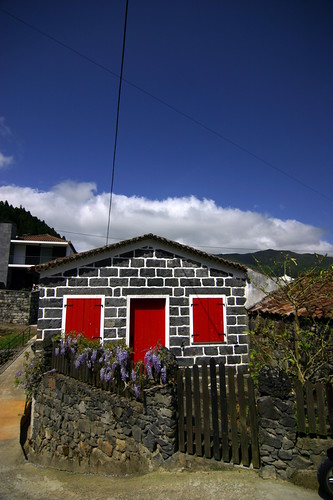Holy Ghost Festivals
Linked to Franciscan mysticism and the charitable spirit of Queen St. Elizabeth of Portugal (16th c.), the Festivals of the Holy Ghost came to the Azores with the first settlers. The invocation of the Holy Ghost at the time of the natural catastrophes that struck the archipelago and the fame of the consequent miracles, together with the hard life and isolation of the islands, all contributed to making the devotion sink deep roots and persist in the Azores although it has disappeared in Portugal with rare exceptions. Moreover, Azorean emigrants carried the devotion to Brazil, America and Africa, where the old ceremonies are now repeated in all their traditional splendour. The Holy Ghost Festivals are also held in Hawaii, where there is a large Azorean community.

Of a charitable nature, the festivals are aimed at distributing food to the needy. Everything starts on Trinity Sunday with the drawing of the names among the "brothers" to determine who will be the mordomos or stewards of the festival in the following year.
The first to be chosen keeps the insignia of the Holy Ghost (crown and sceptre on a silver plate) in his house until Low Sunday, when the festivities begin with balhos or dances accompanied by guitars and singing while the "throne" of the Holy Ghost is set up and profusely decorated in the "stateroom", the main apartment of the house. The "coronation" ceremony is then held in the parish church, the crown is placed on the head of a child or adult - the "emperor" - who carries in procession the symbols of his dignity to the house of another steward - a ceremony called "disposing of the crown" - who keeps them for a week. Afterwards, on every Sunday, the crown, sceptre and plate are passed on to the houses of the other stewards until the feast day itself, when they are displayed in the império (literally, empire) or chapel.
On that day the beef, offered in fulfilment of promises, is made into the typical "Holy Ghost soups" and the fragrant alcatra and, accompanied by various types of bread, massa sovada (biscuits made from kneaded dough) and the aromatic wine called vinho de cheiro, is consumed by all the inhabitants of the parish and its visitors, in an atmosphere of great rejoicing. The festivals are never lacking in foliões or jesters, who are entrusted with the task of announcing, directing and animating the ceremonies with singing accompanied by music on a drum and cymbals, called testos by the people. In rural parishes the festival ends with a lively and colourful "bullfight on a rope". The Festivals of the Holy Ghost extend from Whitsun to the end of the summer, spreading joy all over the island.



No comments:
Post a Comment